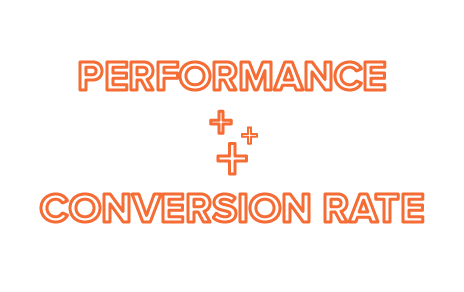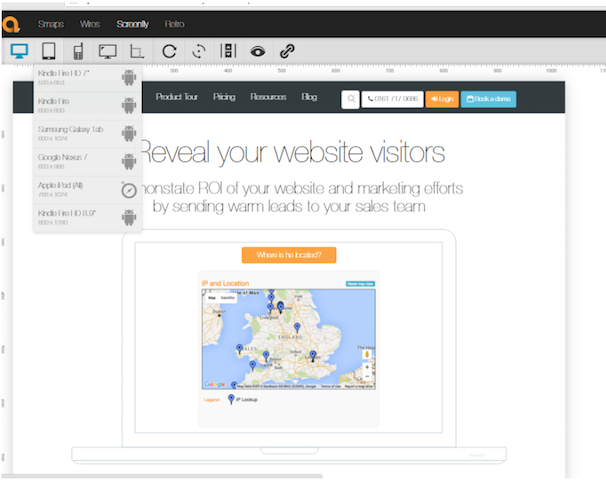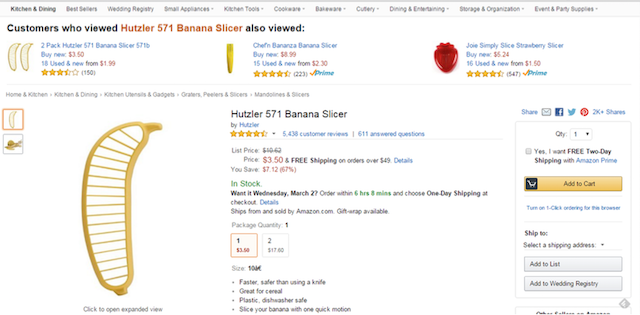Web visitor tracking:
14 ways to identify 21% more people on your site

As such, the businesses who learn to expand their visibility and apply the insights to better serve their customers are the ones who frequently achieve the greatest long-term impact.

At CANDDi, we love innovating visitor analytics. And we love giving customers exactly what they need: actionable insights about the people and businesses visiting their websites.
How Visitor Level Tracking works
CANDDi is able to identify and track individuals by the data captured through your on-page and off-page facilities, such as web forms, live chat, and email clicks. Obviously this data has to be extracted from somewhere, which makes visitor tracking success a bit of a catch 22 situation:
The more visitor engagement your website enjoys, the greater insights you can gain about those visitors.
Which is great when people love your website and interact freely with it.
Not so good when you’ve got a website that nobody engages with. And particularly if you’re not really sure how to fix it.
Which got us thinking...
Wouldn’t it be great to analyse the best examples of our customers doing things right to drive excellent conversion levels, and create a helpful guide to help all our customers do the same.
Under the Bonnet
This study began in 2015 with CANDDi’s account managers working alongside consenting clients to study specific (and sometimes unusual) behaviours of their website visitors.
Our primary goal was to understand in detail what makes one site perform so much better than another in terms of performance and conversion rate.

What do we mean by Conversion rate?
Conversion rate is a measure of the number of potential customers that go on to perform an action leading to or on a website – whether that be clicking an email link, submitting a web form, submitting their details to download a document or sharing a live chat dialogue.
Many websites concentrate solely on increasing the number of visitors they have, when often they have fairly simple problems with their site that, if solved, would have a huge effect on their conversion rate and improve their site's revenue generation.
Try CANDDi today
Book a demo nowThe Study
Of course, not all websites are the same. And neither are their audiences.
Multiple factors including who the visitor is, why they’re at the site, what channel they came through, what device and environment they’re in, what they want to happen next and their previous relationship with your brand, products or services will all impact how that visitor behaves on your site.
Which is why conversion rate is best measured over a long-term and holistic basis. Assuming a fault in conversions based on a small pool of visitors over a short time frame can in itself be a fault.
Big brand websites with large information resources, or even small websites with heavy blog traffic might even ignore conversion rates altogether.
Getting all visitors to ‘convert’ is 1) not realistic and 2) not the be-all-and-end-all of online marketing.
But for most companies, it’s pretty darn important.

The Subjects
Our study looked at the conversion rates and characteristics of 40 top converting websites over a period of six months, including:
- B2B and B2C websites
- Covering a range of sectors
- Offering a range of products & services
- Brochure, informational & ecommerce sites
- Attracting traffic from a range of channels
Over the six month period, a shared total of 661,442 unique visitors were recorded and visitor conversion rates varied from 1.2% to 29.6%, resulting in an average conversion rate of 21.2%.
Some of the points highlighted from the study might seem pretty obvious to many of us. But still time and again we see companies missing them. Making them all the more important to be included.
14 ways to increase conversions and gain more visibility
Here it is. The list of features that pretty much every website in our top 40 met and excelled with. Hope it helps!
1. Fast page load
Many will recall the huge fuss that was made over this topic last year when Google updated it’s mobile algo. Despite that, it’s surprising how many websites still slow themselves down with unnecessarily large files that cause painstaking loading lag. Popular tools for checking site speed include Pingdom or Google PageSpeed
The average page speed of our top converting websites was 1.8 seconds, which is important not just for SEO but also to keep visitors on the site and engaged with content. There are lots of ways to improve page speed including reducing file size, minifying scripts and caching files. If you want more guidance, contact our team.
2. Well designed for most popular devices & browsers
Granted, there’s a lot of devices and browsers to test for. And it takes a lot of work. But investing just a few hours to get things right can help you cover all bases. A pretty good tool for seeing how your site displays on different devices is Quirktools.

3. Clear & easy to navigate
This doesn’t just mean making your navigation bar(s) simple. Although that’s a good start.
It means uncluttering your pages and making navigation decisions simple for your visitors.
Look at (or create CANDDi streams for) your top landing pages and see the most frequent pages and navigation route users take from there. Can users easily find what they’re looking for? And could you make that journey even easier and more compelling for them?
Ps. Here’s how NOT to make a website clear and easy to navigate. (This isn’t one of our customers!) :) www.arngren.net (NSFW at times)
4. Visitor traffic: Quality beats quantity
This one might seem completely obvious. Attracting shed loads of visitors to your website may appear a good idea. But most experienced webmasters know it’s not and really does little else than offer false hope and fudge the figures.
Make sure your marketing channels are focusing on attracting quality prospects who know why they’re at your site.
5. Search intent: Commercial, transactional, information, navigational keywords
Put simply, if your website is geared to attract a load of search users looking for free information, you’re unlikely to make many conversions. If you’re attracting users who are at the decision stage and looking for the best supplier, you’re quids in.
SEM Rush explains keyword types on this article.
6. Exclude robots from stats
Ever noticed in your Google Analytics Acquisition panel those referral visits coming from spammy sitelinks? Well, they’re robots/spiders/crawlers/bots. And for some websites, this can equate to up to 20% of their traffic volume and seriously impact the accuracy of conversion rates.
A common solution is to create a New Reporting View in Admin, excluding the most frequent spammy referral sources, read article.
7. Use dedicated landing pages for relevant products and services
Another pretty obvious one, but so crucial for enhancing visitor experience and maximising conversion rates. In alignment with point 5, try to ensure your landing pages are optimised for the right keyword types. If you’re trying to sell, choose commercial or transactional keywords. If you’re offering information in exchange for capturing data, go for informational phrases.
Try CANDDi today
Book a demo now8. Make your website as considerate as possible
Not always immediately obvious. That is, until you experience it for yourself. I’ll give you an example. Anybody who’s attempted a full ‘click and order’ shop on a supermarket website will know about this. Faced with thousands of products, grouped into hundreds of categories, it can be an ordeal zapping hours of your life you’ll never get back.
Imagine if every time you added a product to the cart, it refreshed the page and took you back to the home page. That would be pretty annoying. And the chances are you wouldn’t stay long.
Now, this is an extreme example (and one you probably won’t find on the big supermarket websites) but explains the principle. There can be many examples during a web visit where the prospect is actually disrupted and taken away from a purchase attempt.
Nothing kills conversions faster.
Sometimes, you might not even be aware of it. Which is why it’s so important to test your site thoroughly through the eyes of a prospect. Test every feature to see how it makes you feel. And remember, your prospects are even less tolerant than you.
9. Offer a selection of contact options
Not everyone is comfortable with phone calls. Some people get irritated waiting for email responses. A few of us just like instant yes/no answers through live chat.
The bottom line is that if you’re just offering one or two contact options, you could be eliminating a large chunk of prospect who like things done their way.
Be flexible.
10. Make your USP’s clear & CTA’s compelling
Why would a prospect want to actually deal with you? And how is their life going to change by actually giving you their details?
I’m not saying you have to be fabulously over the top about the unique benefits of your super life-changing products or services. But a little passion goes a long way.
Be excited about what you offer. And speak with your prospects to understand what information is most important to them. If they most commonly want to know price, build your primary call to action (CTA) around giving prospects a price.
In short, make sure your CTA’s touch on what prospects want to know.
11. Don’t ask too much
When it comes to capturing visitor data, only ask for the absolute minimum information you need at that stage. Many studies have shown the more fields you put in a form, the lower the conversion rates.
Personally, I haven’t found that adding 1 or 2 more fields ruins conversion rates if an offer is compelling enough for the prospect. But the principle stands true: being greedy with the information you ask for can ruin the party.
Some interesting points about web forms on this article.
12. Serve when ready
Online conversions are much to do with impulse and at the very moment a prospect decides they want it, you should be there with a silver platter.
For a long time, the above fold/ below fold topic caused intense debate. As mobile and tablet browsing is now commonly the norm, the feeling is that most prospects have become more wholly accustomed to scrolling around pages.
But still we see buttons and links far too subtle and as a result, being missed.
If you’re going to make anything obvious on your page, make it the button. And tell your prospects why they should click it.
13. Build trust
People are naturally suspicious when they come to your website. And for good reason as there’s lots of people in this world they shouldn’t be giving their money to.
Helping visitors trust your website is a complex topic in itself and includes your choice or URL, site design, logos, badges, testimonials and social signals.
Trust is massive when it comes to conversions. And you should be doing everything you can to show that the world knows and trusts you. Check out this article.
But keep it genuine. We’ve all seen examples of obviously fake reviews and wanted to run a mile.
Really. Your banana slicer got 5,438 reviews..ok...

In building trust, a proper address - bricks and mortar, not a P.O. Box - is a good start. A phone number, with people answering the phone, also helps. Showing a privacy policy and explaining sales procedures clearly can also help the user to trust you.
If you have a SSL certificate, think about displaying the "VeriSign Secured" logo to users.
Design and content also play a part in trust. A poor design gives off an unprofessional feeling. If a company can't afford a decent website, or won't spend the money on it, how can a user be sure their order will be treated with the importance it deserves? If content is inaccurate or badly written, the same applies - show that you take pride in what you do.
14. Include tracking on all outbound emails
Probably the stand alone easiest way to see more web visitors and a feature actively adopted by all the best converting websites.
CANDDi integrates with every mail platform and even offers outlook and gmail plugins – so you can be sure every email that leaves the business is being tracked for optimum visibility.
